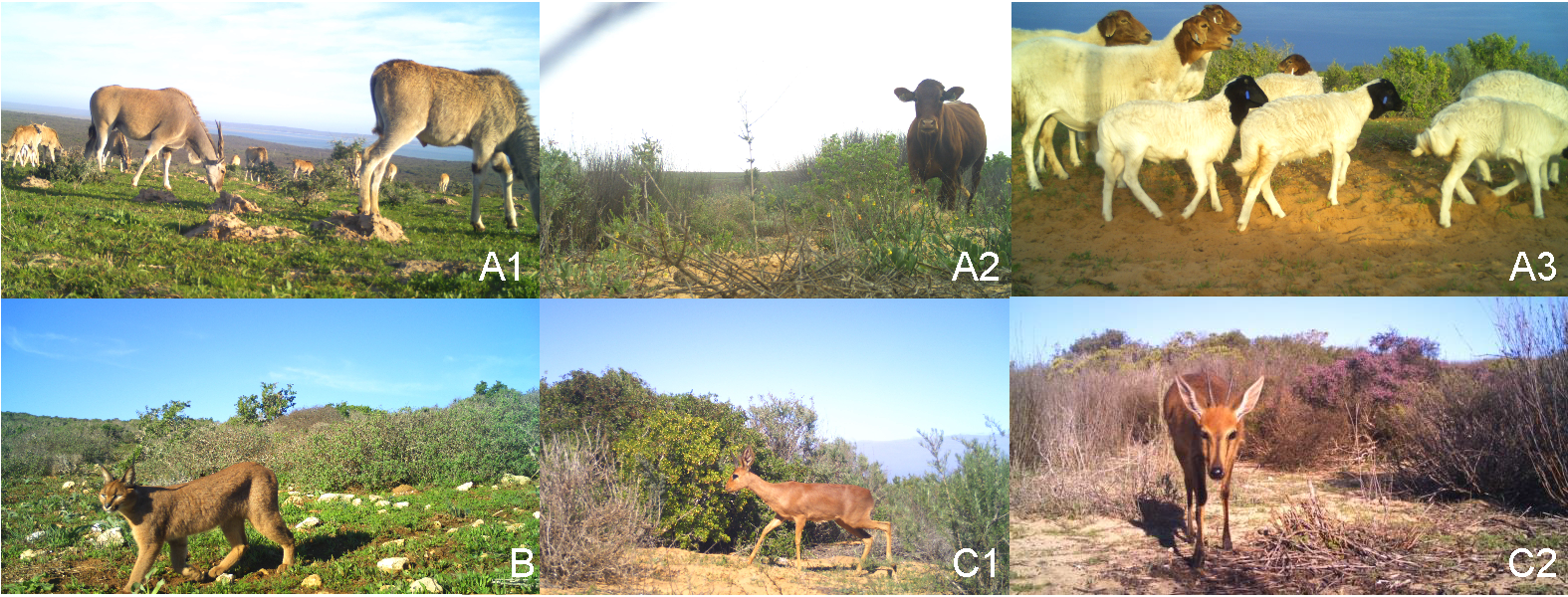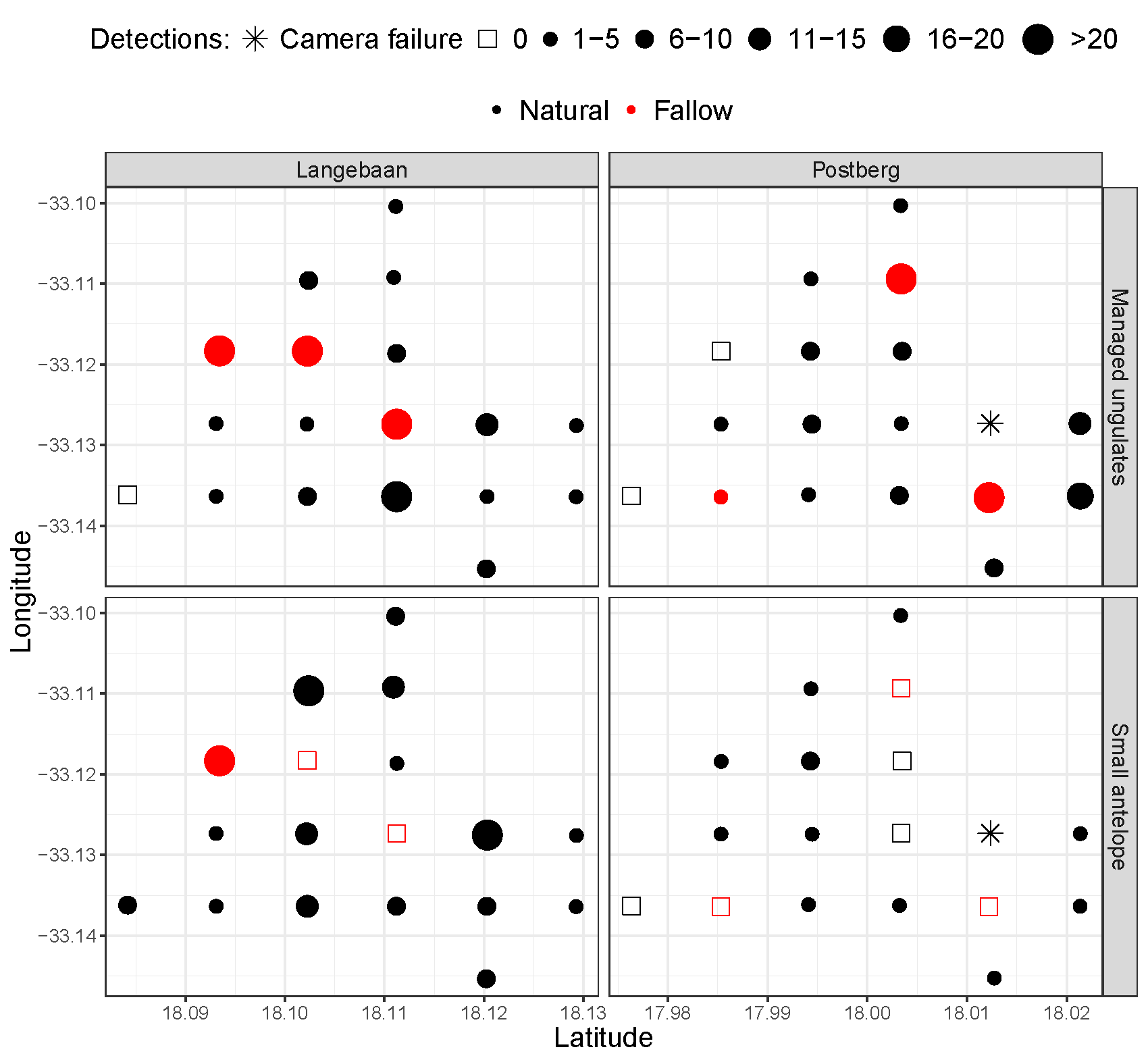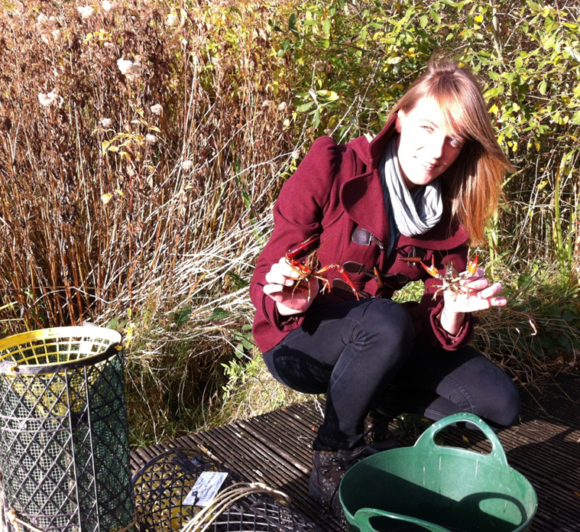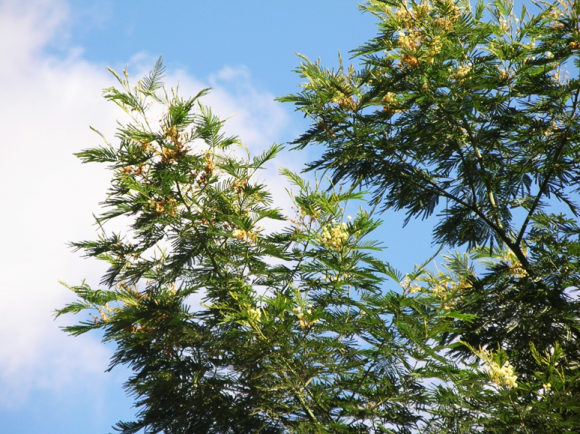7 April 2020 | By Debbi Winterton and Nicola van Wilgen
The way that we manage land influences species occurrence and interactions. However, in their recent study investigating species co-occurrence along the west coast of South Africa, Debbi Winterton (SANParks), Nicola van Wilgen (SANParks & C·I·B Associate) and Jan Venter (Nelson Mandela University) discovered that intensive management of small areas also makes it difficult to detect ecological drivers.
This study was initiated in response to land owner concerns that caracals (Caracal caracal) were responsible for a “declining” steenbok (Raphicerus campestris) population in the contractual Postberg section of the West Coast National Park. While predation may drive antelope abundance it is not the only process that regulates populations.
They hypothesized that historical land use and the overstocking of large herbivores may also influence small antelope populations either directly through competition or by altering habitat. Using camera traps they collected presence-absence data of terrestrial mammals across three areas (two in the park and one on a farm) to assess drivers of occurrence, species interactions and activity patterns.

They found little evidence that competition or predation were regulators of small antelope abundance, but the data did suggest that habitat is a driver of both small and large antelope occurrence and detection. The overriding finding was that small areas provided very limited scope to detect ecological patterns which would historically have taken place over much larger areas (e.g. antelope were observed at all sites within some areas, or caracals at almost none in others, negating the power of site covariates). This makes adaptive management difficult, and is a real concern for many of the small protected areas in South Africa. They recommend continued monitoring over a longer time period to assess the response of small antelope and vegetation to removal of large antelope and to determine the spatial information requirements to inform management of small protected areas.
“Land use and management have important consequences for ecosystem function. Therefore, in the face of global environmental change we need to consider not only how systems are functioning now but also, how vulnerable they are and how they might be able to respond to change. This is especially important in a highly transformed region like the Fynbos Biome where habitats are fragmented with little connectivity overall, since species need to be able to move in order to adapt. Therefore, it is up to us to understand the workings of ecosystems and to encourage more sustainable and integrated land use models so that we can manage ecosystems more effectively, while also taking the interests of society at large into account,” explains Debbi Winterton.
Read the paper




